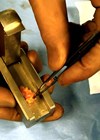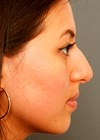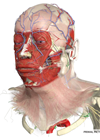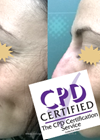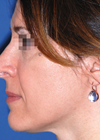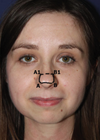Features
The AMWC 2023 awards
In partnership with the Aesthetic Multispecialty Society (AMS), the 2023 AMWC Awards honours physicians for their innovative protocols and techniques, in addition to treatment results in the field of aesthetic & anti-ageing medicine. The ceremony is also an occasion to...
Making the most of the temporalis fascia graft in open rhinoplasty: an innovative technique with outcomes of 2000 cases over a 15-year period
The authors present a technique that increases the surface area of a temporalis fascia graft when used to provide smooth, dorsal coverage in cases of open tip rhinoplasty. Numerous graft materials have been developed for use in rhinoplasty procedures in...
Continuing personal development
“It is an interesting biological fact that all of us have, in our veins the exact same percentage of salt in our blood that exists in the ocean, and, therefore, we have salt in our blood, in our sweat, in...
Virtual learning post lockdown
The rapid onset and intensity of the COVID-19 pandemic has required some radical changes in most areas of our professional lives, including a chance to update traditional approaches to learning. Virtual learning is the use of remote video conferencing software,...
The Re-humanising Revolution: Breaking the conspiracy of silence
Over the last few years, the mental and emotional wellbeing of those who work in medicine has come under scrutiny. The author introduces a new resource. Working in healthcare has always been stressful but never more so than today. In...
Preservation rhinoplasty
Hump reduction and osteotomies to close the open roof, or lowering the whole nasal dorsum? Charles East explains how preservation techniques can improve outcomes by maintaining the integral structures of the nose. What is preservation rhinoplasty? The origins of reduction...
A suggested management pathway for rhinophyma and benign superficial skin lesions that includes the use of plasma
Rhinophyma is an aesthetic embarrassment to many people. It is the result of sebaceous gland hyperplasia within the skin over the alar cartilages of the nose. It has a familial tendency and in addition to being unsightly it can commonly...
A practical guide to the most commonly used dressings in wound care
The author explores and reviews the most popular classes of dressings used for acute, chronic and problem wounds, their properties and indications based on direct observation and research studies. With an ever-increasing armamentarium of wound care tools, different brands and...
A picture is worth a thousand words… communicating with your patients more effectively
Communicating information effectively with patients is essential yet often challenging. Plastic Surgeon Gavin Miller takes us through his approach to using online resources to make the process as effective as possible. Getting ideas across to other people isn’t always easy,...
‘Rhinofiller’: non-surgical correction of the nose
Dr Agolli from Italy advocates the use of filler to quickly and easily achieve a non-surgical rhinoplasty without downtime for the patient. Cultural basis It is believed that Dante Alighieri was not a handsome man, probably because of his appearance,...
The importance of continuing professional development in rhinoplasty
The PMFA Journal team invited two world-renowned rhinoplasty surgeons to reflect on the importance of life-long learning in their chosen specialty. The vital role of continuous surgical training in rhinoplasty By Pietro Palma Rhinoplasty can be a most rewarding operation...
Closed rhinoplasty Serdev techniques
Why is rhinoplasty so important? Facial beauty and harmony are dependent on correct aesthetic angles, volumes and proportions. The complex face is properly divided into three equal parts: forehead, nose, and lower part (where the upper lip forms a ratio...



